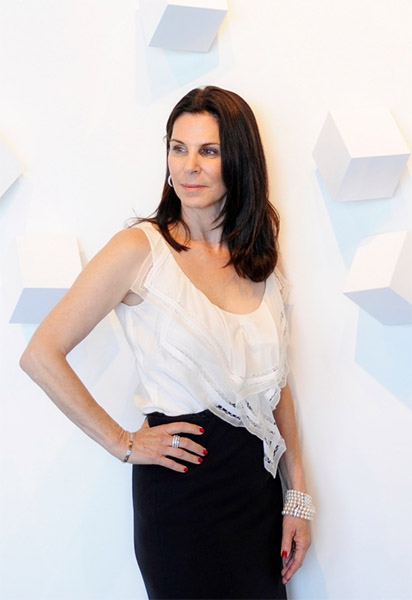BIOGRAPHY
America, b.1952
“Lori Cozen-Geller formulates her sculptures out of a familiar, vital, and relatively recent artistic language. But in creating these objects, she has reasoned well outside the norms of this vocabulary and the genre it informs, almost to the point of heresy. Cozen-Geller is indeed a minimalist, following in the wake of hundreds of principally (if by no means exclusively) American artists who have pared down their formal vocabularies to essences. But Cozen-Geller wants something different out of large, simple shapes than do most of her minimalist predecessors and cohorts: she wants meaning. Symbolic meaning. Iconography, that is, as recognizable (if not necessarily self-evident) to the untrained viewer as a stop sign – albeit far less literal.
The minimalist tradition, now almost a half-century old, presumes that the reductive, geometrically constituted objects that comprise what we know as “minimal art” do not communicate anything beyond the physical, or at least optical, experience of their existence. What that experience is may shift, from, say, the obdurate materiality of a Carl Andre or the relentless arithmetical logic of a Sol LeWitt to the perceptual elusiveness of a Robert Irwin; but it is not supposed to assume any sort of inferential resonance, much less narrative content. “What you see is what you see,” cautioned Frank Stella at the outset of his career, when he was painting some of the early landmarks of the minimalist movement and helping to establish the movement’s philosophy and ethos.
Cozen-Geller not only accepts the inevitable associativity of things – the referentiability of non-referential art objects – but exploits it. It would be a stretch to say that she harnesses it to her own message(s); if she were bent on conveying specific, prosaic information, she would have to engage a pictoriality far less oblique than the non-objective language of pure, reductivist geometry she invariably employs. Rather, in conjuring, say, the memory of her father, Cozen-Geller does not need to paint a portrait of the man, but only to refer to his absence by displacing a shape out of another, larger shape. In this manner, she bespeaks her feelings through an intuitive but lucid and simple approach to formal relationships – an approach that allows her viewers to respond with similar intuition.

